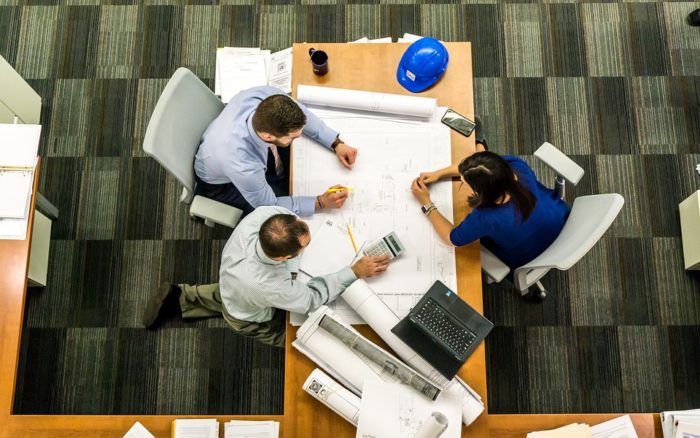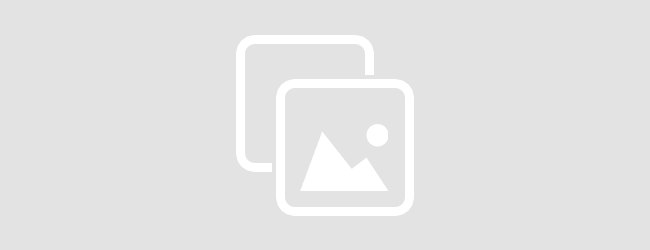เป็นประเด็นต่อจากเรื่อง Rethinking Space ที่พูดถึงการออกแบบ “พื้นที่” ในโลกหลัง COVID-19 แต่ตอนนี้เน้นที่พื้นที่สำนักงานเพียงอย่างเดียว
อ่านเจอจาก ‘Needle in a haystack’: Reborn tech offices may need distance and mass testing ที่พูดถึงออฟฟิศของบริษัทไอทีใน Silicon Valley แต่ก็คิดว่าใช้กับออฟฟิศทั่วๆ ไปได้เช่นกัน
คิดว่าหลักการหลักๆ ของออฟฟิศยุคปี 2020 มีด้วยกัน 2 เรื่อง
- social distancing ภายในพื้นที่ขนาดเท่าเดิม นั่นแปลว่าต้องลดจำนวนคนที่เข้ามาทำงานในออฟฟิศลง
- กระบวนการคัดกรองว่าคนที่เข้ามาทำงานในออฟฟิศนั้น “ปลอดภัย”
ข้อแรกนั้นไม่ยากนัก เพราะอยู่ในวิสัยที่ทำได้จากนโยบายของบริษัทเป็นหลัก อาจมีเทคโนโลยีมาช่วยสนับสนุนบ้าง
As companies evaluate how to safely go back to work in anticipation of the day when government lockdowns lift, they are navigating an array of challenges. Executives are talking about restricting the number of employees onsite, perhaps by staggering shifts. They are looking to support workers through benefits like child care. Real estate firms that pioneered “6-foot offices” in China are coaching U.S. companies on spreading out workspaces. Ford is experimenting with wearable technology — like bracelets to buzz workers when they get too close.
แต่สุดท้ายเป็นเรื่องการวางแผน การจัดการ ว่าจะให้ใครกลับมาก่อน-หลัง
When employees do return to the office, they’re likely to find new rules and fewer co-workers. “We anticipate that approximately 60% of the workforce will shift to some balance of ‘in office’ and remote work,” said Roy Abernathy, executive vice president of global workplace strategy at Newmark Knight Frank.
The commercial real estate service firm is working with clients to “decide who comes back first and how they return,” and has offered them a detailed roadmap, with considerations that include how often parts of offices should be cleaned and what should become of common areas.
นอกจากในพื้นที่สำนักงานแล้วก็ยังมีสถานที่อื่นๆ ในลูปด้วย เช่น บริษัทไอทีใน Silicon Valley มีระบบรถบัสรับส่งพนักงาน (ซึ่งก็คล้ายๆ กับรถบัสรับส่งพนักงานโรงงานของบ้านเรา)
“We might have to be thinking about our transportation system differently,” Eisenman said. “Do we have smaller numbers of people on buses allowed? Do we require fever checks in order to get onto a bus?”
หรือนโยบายการใช้ห้องน้ำ ซึ่งอาจเป็นจุดอ่อนไหวที่สุดที่จะเกิด infection อาจต้องไปไกลถึงขั้นให้เข้าทีละคน และทำความสะอาดทุกครั้งหลังมีคนใช้งานห้องน้ำ
For offices that have switched to single-occupancy restrooms, “In the short term,” Katsikakis said, “we might find we need attendants to ensure distancing and that washrooms are cleaned after every use.”
ในระยะยาวก็มีประเด็นเรื่องโครงสร้างของสำนักงานด้วย เช่น การออกแบบประตูใหม่ให้ไม่ต้องใช้มือจับ (ประตูอัตโนมัติของ 7-Eleven นี่มีคุณประโยชน์กับคนไทยมากในเรื่องนี้) รวมถึงการออกแบบระบบระบายอากาศใหม่หมด (ซึ่งต้องใช้เวลา + เงินอีกพอสมควร และจะเขียนถึงเรื่องนี้โดยละเอียดต่อไป)
ส่วนประเด็นที่สอง เรื่องการคัดกรองคนที่ไม่ติดเชื้อโรค เป็นสิ่งที่ยากกว่ามาก เพราะต้องพึ่งพากระบวนการทดสอบ (ซึ่งตัวมันเองก็มีหลายแบบ) ที่รู้ผลเร็วและราคาถูกพอ เพื่อให้สามารถสเกล รองรับคนจำนวนมากที่จะกลับเข้าไปยังที่ทำงานได้
Whenever companies go back to work, some form of employer-sponsored testing and tracing appears likely to become the norm.
rolling out mass testing is a balancing act that requires answering thorny questions about effectiveness, privacy, price and access, while keeping up with fast-moving science and managing unprecedented health risks.
ตอนนี้ยังไม่มีใครมีโซลูชันชัดเจนว่า กระบวนการทดสอบและคัดกรองคนที่เหมาะสมควรเป็นอย่างไร แนวทางหนึ่งที่เป็นไปได้คือ การทดสอบ “อย่างไม่เป็นทางการ” ก่อนหนึ่งครั้ง ถ้าพบว่า positive ก็ค่อยเข้าไปทดสอบจริงจังอีกที
an employee who tests positive for COVID-19 using a workplace test wouldn’t be added to official government tallies, unless they were retested with a sanctioned test at a traditional health care provider.
อีกแนวทางหนึ่งที่เป็นไปได้คือ มีชุดทดสอบให้พนักงานไปทดสอบตัวเองที่บ้าน (จากน้ำลายหรือในจมูก) แล้วส่งตัวอย่างไปที่แล็บตรวจอีกที
The test — now being offered for free to a handful of companies as beta testers — is done using an employee’s saliva and, if the employer requests it, can also include a nasal swab.
Employees turn in their samples to a coordinator at their company, who in turn passes them to DxTerity for processing.
If a result comes back positive and is confirmed with a second test, DxTerity will then help customers collect another sample and send it to a certified lab. This should eliminate false positives, Terbrueggen said.
ถ้าหากเป็น false positive (ตรวจว่าเป็น แต่จริงๆ ไม่เป็น) ก็คงไม่เป็นไร สิ่งที่ทุกคนกลัวคือ false negative (ตรวจแล้วไม่เป็น แต่จริงๆ เป็น)
the one perhaps most likely to keep executives up at night — is false negatives.
ตรงนี้เป็นเรื่องยากมาก เพราะ COVID-19 อาจติดแล้วไม่เกิดอาการใดๆ เป็นระยะเวลายาวนาน (ตามที่เราเห็นในข่าว) ทางออกคงไม่มีวิธีอื่น นอกจากตรวจซ้ำไปเรื่อยๆ ตรวจบ่อยๆ เป็นประจำ
“It’s a needle in the haystack problem,” Terbrueggen said. “You have to do regular screening for people — there’s no way around it.”
กล่าวโดยสรุปคือ เรื่องการทดสอบพนักงานว่าปลอดภัยหรือไม่ ยังไม่มีโซลูชันที่ชัดเจนว่าทำอย่างไร และคงจะเกิดความมั่ว ความสับสน ไปอีกสักพักใหญ่ๆ
ภาพจาก Pixabay

